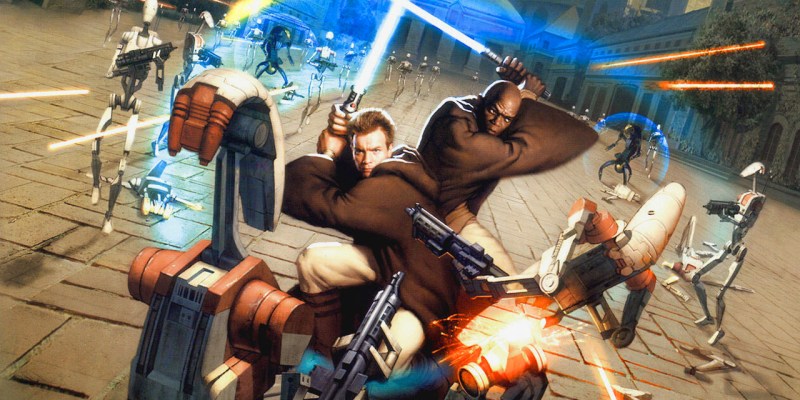I have a soft spot for long-forgotten video games. It’s in my DNA. As much as I like to stay on top of the latest releases and revisit classics, I always find myself circling back to obscure, janky games that grabbed my attention for way too many hours because I didn’t know any better.
As a ‘90s kid whose parents weren’t into gaming, my yearly selection of titles around the PlayStation 1 era was quite limited. And since I hadn’t been engulfed by gaming magazines or websites yet, I often gravitated towards big IP stuff that I recognized on the shelves. Star Wars was something I very much enjoyed, so I played a lot of The Phantom Menace when it came out — it was a decent enough, albeit confusing, tie-in. Then came Star Wars Episode I: Jedi Power Battles out of the blue.
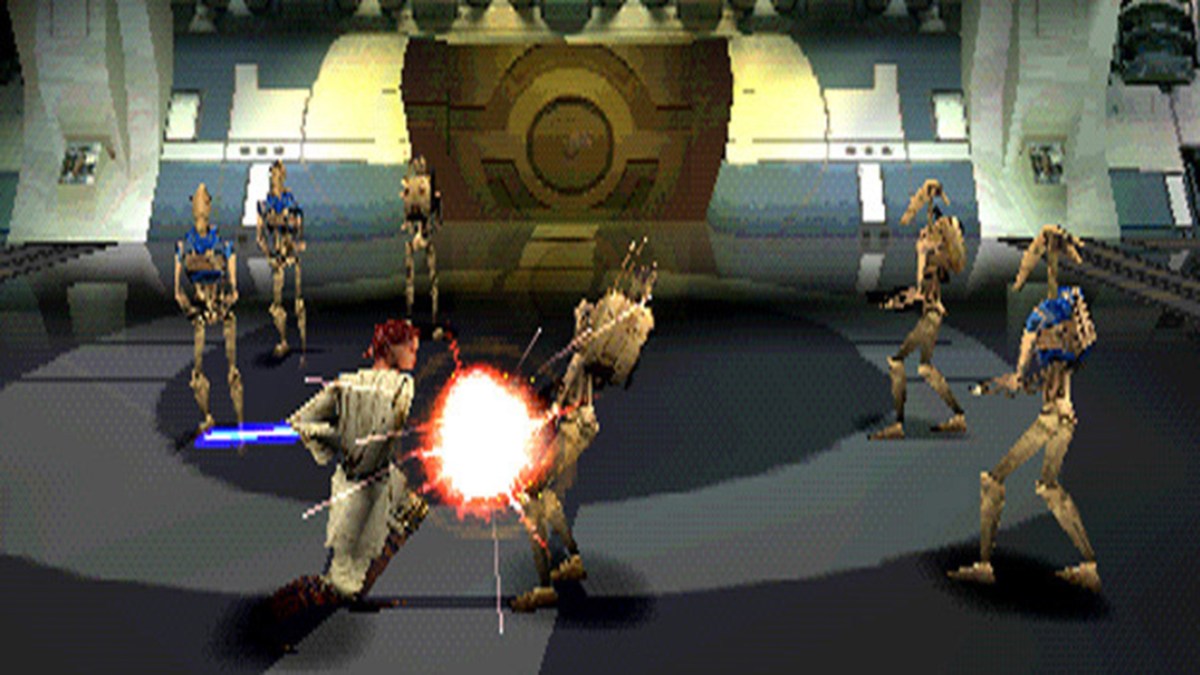
This game always felt weird because it was LucasArts’ second action-adventure take on the events of the first prequel film. It was on the cover – Jedi Power Battles was retelling The Phantom Menace again on the PS1 and Dreamcast. So what was the catch? Well, for starters, Big Ape Productions hadn’t developed it, so this was technically LucasArts’ internal approach to making an Episode I game. And boy was it different.
While the game The Phantom Menace tried to juggle several genres at once, (It could be described as an almost top-down action-adventure RPG of sorts.) Jedi Power Battles was much more straightforward, instead turning the film’s locales into giant platforming gymkhanas and beat ‘em up corridors. LucasArts’ approach was openly arcade-y, high scores and local co-op included. But there was enough jumping around to make it stand out from the average button-mashing crowd. In fact, its platforming sections might be the hardest bits of the entire adventure.
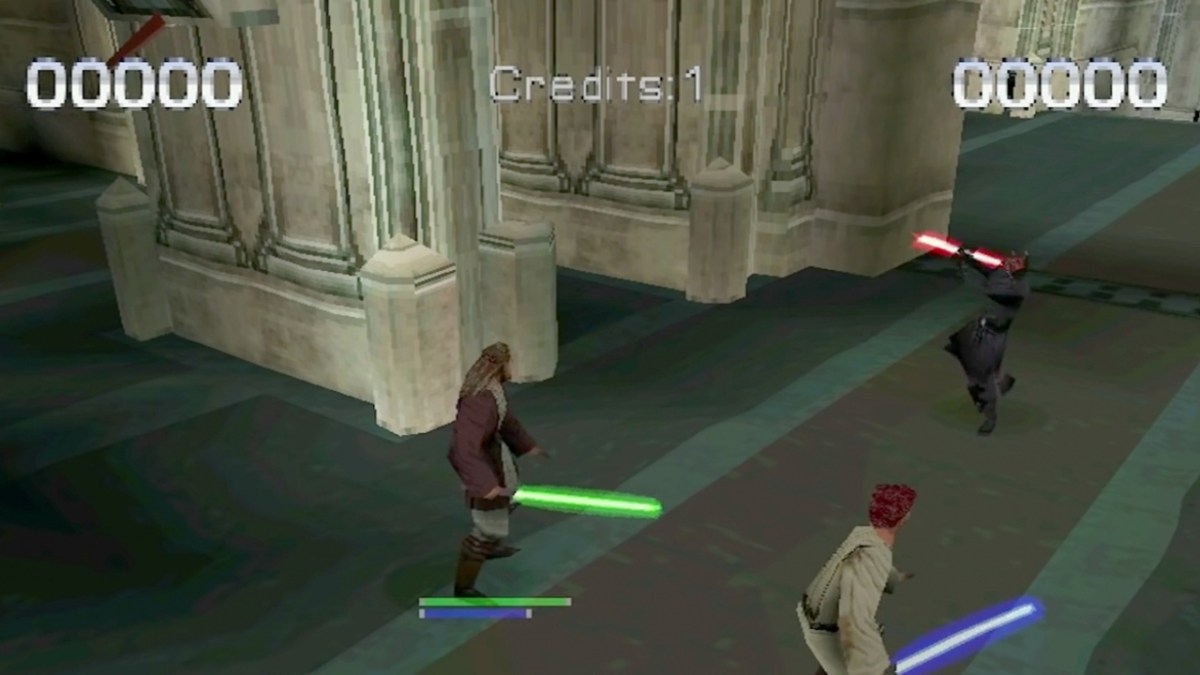
One could argue The Phantom Menace borrowed some gameplay elements from Expanded Universe games such as the first Jedi Knight, and if you look past the turn of the century, most Jedi-centric Star Wars titles expanded on that formula. Meanwhile, Jedi Power Battles was this weird little anomaly that was just goofing around with the IP.
With hindsight, perhaps that’s Jedi Power Battles’ biggest defining trait: how unabashedly kooky it is. All storytelling and dialogue are reduced to the bare minimum past the traditional Star Wars opening crawl, the enemies are mostly braindead and will even chase you into fatal jumps they can’t make, and you’re constantly pushed from one chaotic level to the next in full arcade fashion. Nothing makes a lick of sense if you haven’t watched the film. And if you have (like most people), the game finds ways to leave you scratching your head more than once anyway.
Normally, first timers’ confusion comes from the random-ass boss battles (They’re quite abundant.) in the shape of all kinds of deadly droids and angry creatures / aliens. Mind you, they’re actually cool for the most part, as the game does very little recycling of move sets and situations against all expectations, but seeing a big white humanoid straight out of Prometheus crashing a speeder into the Coruscanti taxi you’re on top of without any explanation — and to the rhythm of funky music but Star Wars — is something else.
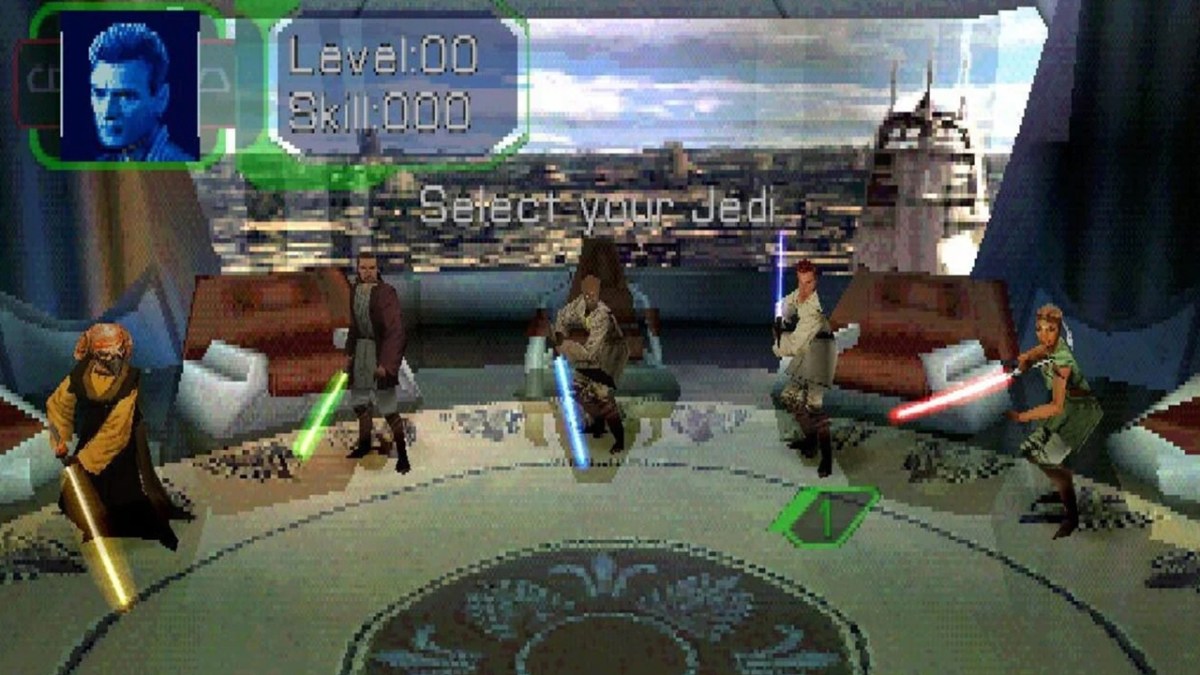
The overall zaniness that covers Jedi Power Battles also extends to the five-Jedi roster of characters: Obi-Wan Kenobi, Qui-Gon Jinn, Mace Windu, Adi Gallia, and Plo Koon. Since only Obi-Wan and Qui-Gon had had on-screen lightsaber action at that point, the other three Jedi got colors at random: Mace Windu uses a darker blue lightsaber; Adi Gallia has a red one, full Sith-style because why the hell not; and Plo Koon owns a bitchin’ light orange saber.
Koon is the only alien in the starting roster, so that’s extra cool points. And if you were a kid like me who always liked to pick the weirdest freak available, you probably had a hard time trying to beat the game with Mr. Koon, since he was the strongest but least agile of the bunch. And that was bad news during the already difficult platforming sections I mentioned before.
It turns out that, predictably, Obi-Wan and Qui-Gon were the average Jedi Knights. Adi Gallia and Plo Koon were the most unique but hardest to master. And Mace Windu was just freakin’ broken because he was Samuel L. Jackson, I guess. I won’t spoil who does what for those being convinced right now to check out the game, but Windu can spend a chunk of his Force bar to just duck and let his sword destroy anything trying to touch him.
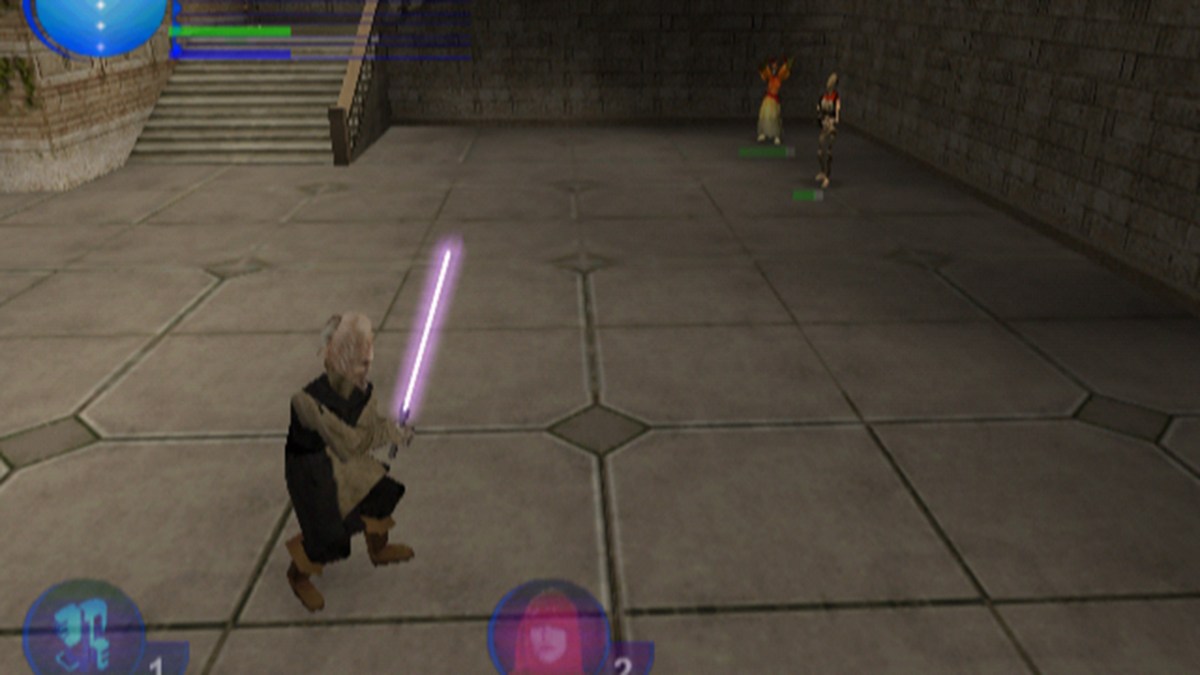
Jedi Power Battles is also meatier than you’d expect, with a couple of sections dropping the beat ‘em up genre and embracing vehicular warfare, and each character’s full playthrough unlocks unexpected extras such as playable Darth Maul and Padmé Amidala, among other things. While tough, getting the hang of it — hilarious collision bugs included — is pretty fun, and you might find yourself replaying it with a different character or even a good friend for extra laughs.
It also had a Dreamcast release in late 2000 with smoother graphics and frame rates, plus the addition of Ki-Adi-Mundi… sporting a purple lightsaber! It’s the superior version of the game, but at the same time, it’s not nearly as janky as the original, losing much of the charm I’ve been discussing in this piece.
Ahead of Star Wars Jedi: Survivor’s Soulslike combat and Metroidvania structure taking over your gaming sessions in March, Jedi Power Battles is a good reminder that not every old Jedi-centric Star Wars game tried to replicate the films’ wonder and grandeur. Instead, sometimes you had stuff like Yoda laughing at your deaths (not a joke, I swear).
